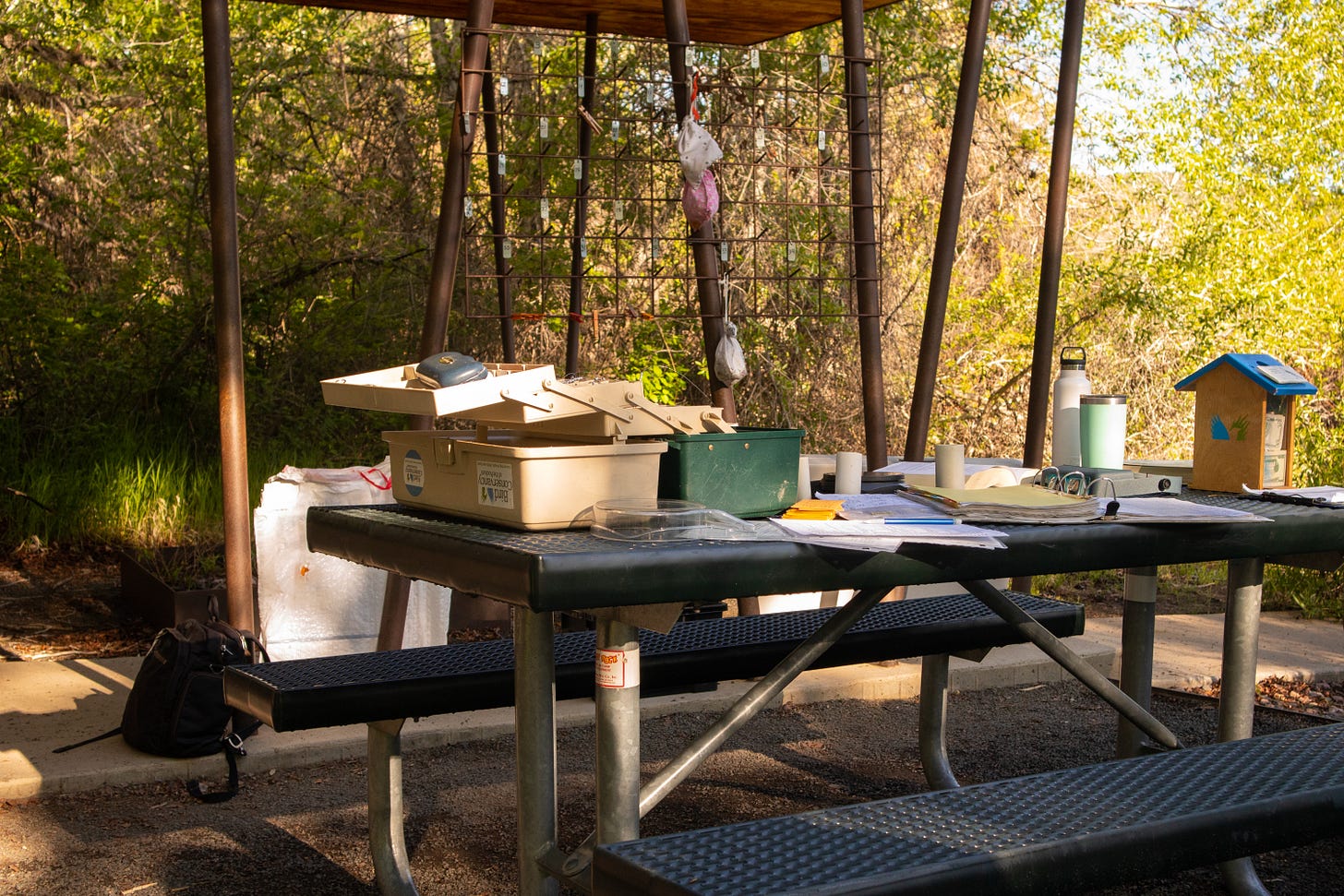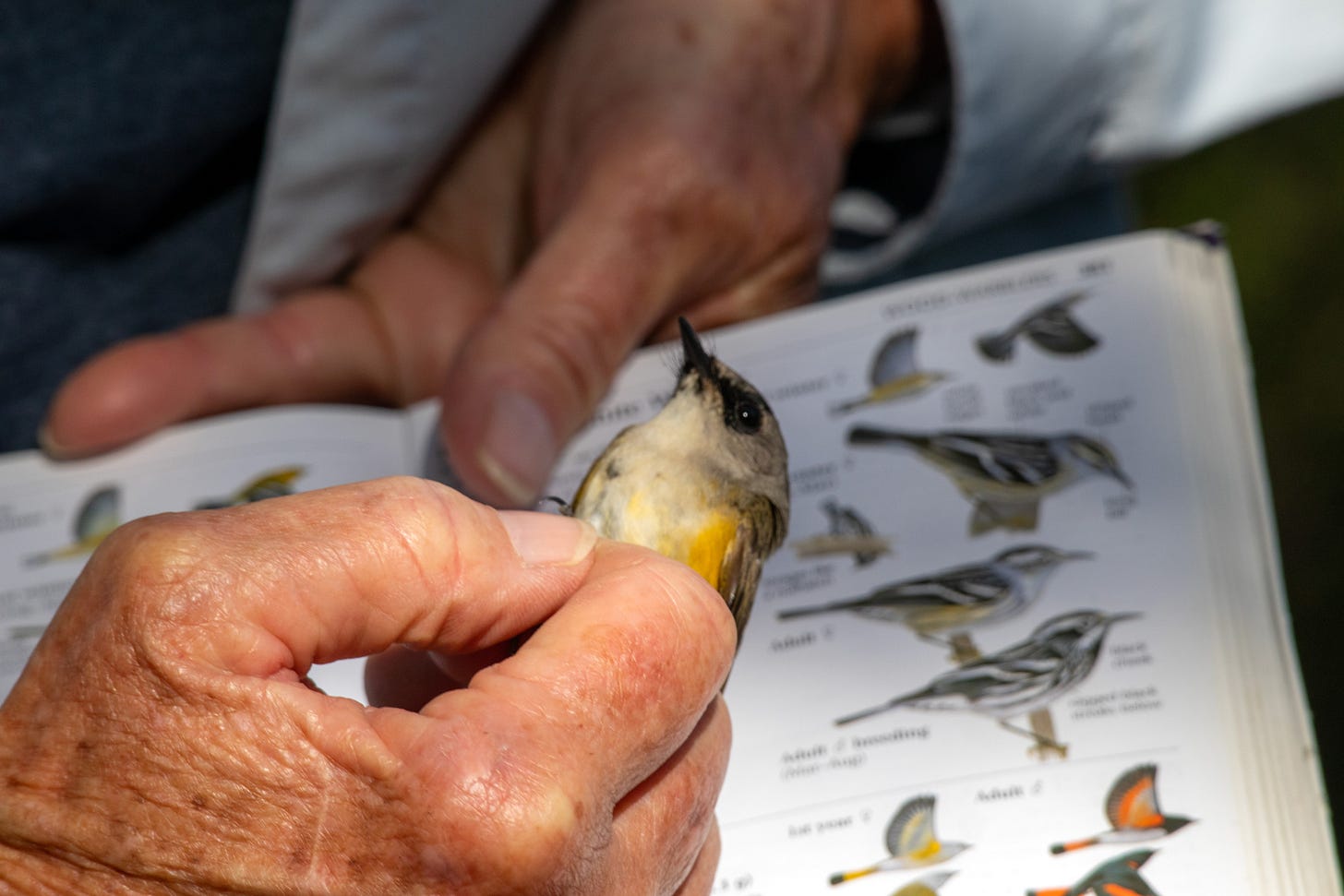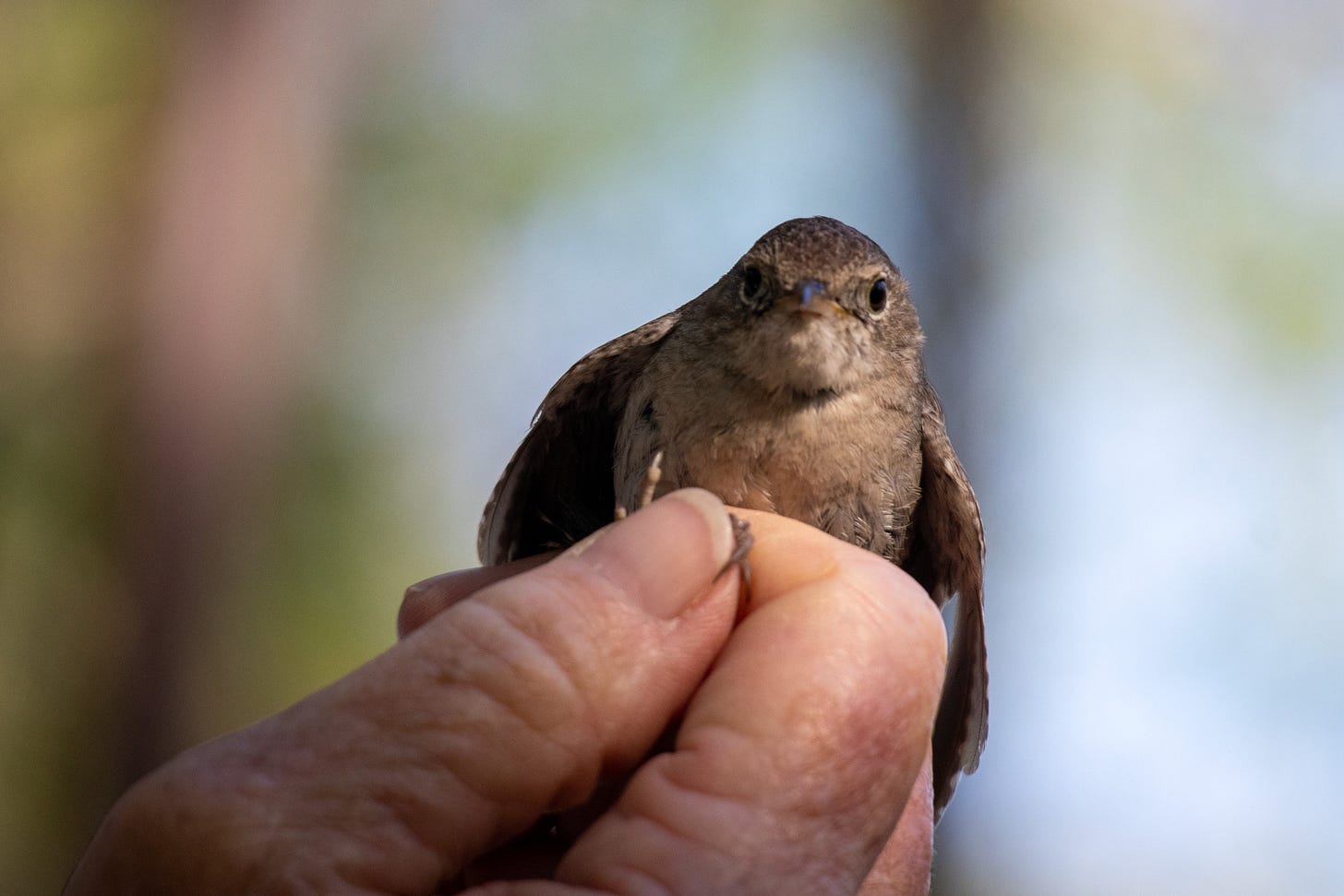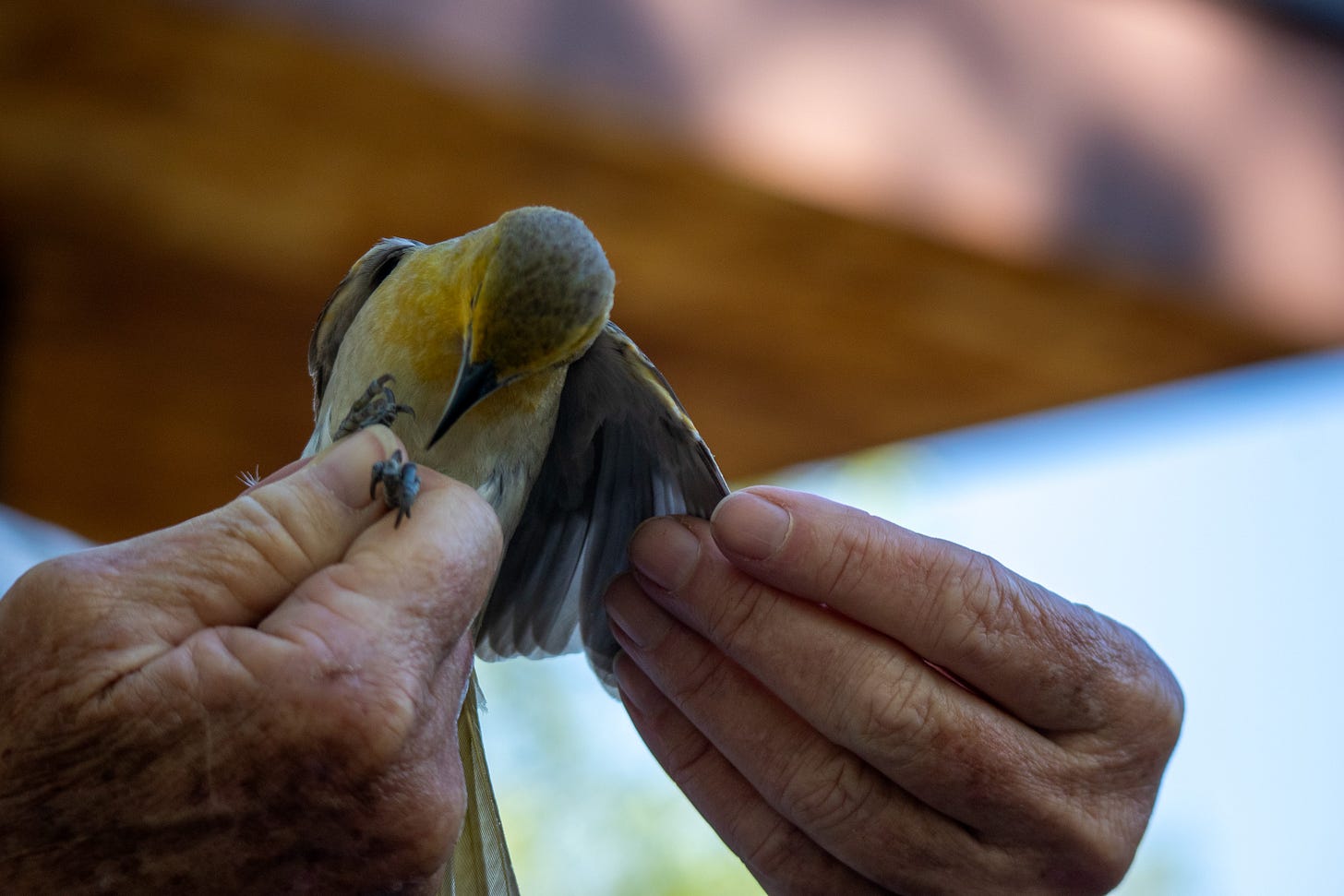
I arrive at the Denver Audubon Nature Center in Chatfield State Park shortly after dawn and join a small group of birdwatchers gathering at the entrance. We're here to visit a bird banding station and catch a glimpse of conservation research up-close. After checking in, an Audubon Society guide leads us to the banding station inside the park.
The station is tucked away, barely visible at the edge of a wooded area. It's a simple field lab with a shelter, picnic table, banding equipment, and a semi-circle of chairs where visitors can sit and watch wildlife biologists as they work. It's a lively place too, where young research assistants dash back and forth, picking up equipment and disappearing in different directions into the vegetation.

I take a seat near the end of the picnic table. Beyond the table hangs a metal grid with numbered pegs, and from some of the pegs, dangle small cotton bags. Periodically, the bags wiggle and rustle.
Meredith, a bander from the Bird Conservancy of the Rockies, welcomes us and explains the banding process. First, researchers hang mist nets around the station and check them regularly to collect any netted birds. Then, they place the birds in cotton bags and hang them on the pegs, where they await their turn to be banded, measured, weighed, and released.
Meredith removes one of the cotton bags from the grid. She slips her hand inside the bag, and it flutters and scuffles. After a moment, she pulls out a small sooty-plumed bird with a dark charcoal crown.
"We've got a Gray Catbird," she says. The research assistant makes a note in the spreadsheet. Meredith explains that birds have personalities that align with their species. It's clear from the catbird's raspy mews that this breed has a rebellious streak.
Meredith handles the bird skillfully as she places a tiny band on its leg. She measures its wing and tail, weighs it, and asks for a volunteer. A boy steps forward from our group, and Meredith gently slides the bird into his cupped hands. The bird sits momentarily, shakes its feathers, and then disappears into the trees with two quick wing beats.
The whole process is repeated for each bagged bird. There's a House Wren, a second Gray Catbird, and an American Redstart. Each is dazzling to see up close, with their gleaming feathers and distinct charms. Every bird has an individual spark, a spirit that you might miss from a distance.

The last two birds that Meredith unbags are Bullock's Orioles—a male and a female. They're a dapper pair with an impressive blend of colors that includes yellow, orange, olive-gray, white, and black. She bands the birds, takes their measurements, and asks me if I want to release the female.
I cup my hands before me, and Meredith places the bird in my palms. The oriole’s feathers are silky, and her body is almost weightless. Then, in a flash, she flies over my shoulder and back into the woods. And for the rest of the day, I think of my bird and wonder where she is and how she's faring.






O wow, what a delicate and beautiful bird that oriole is. How amazing that you got to have this encounter!
What a wonderful experience! As a life-long bird lover, seeing our feathered friends taken care of is always a joy! 🐦⬛🐦⬛💕💕